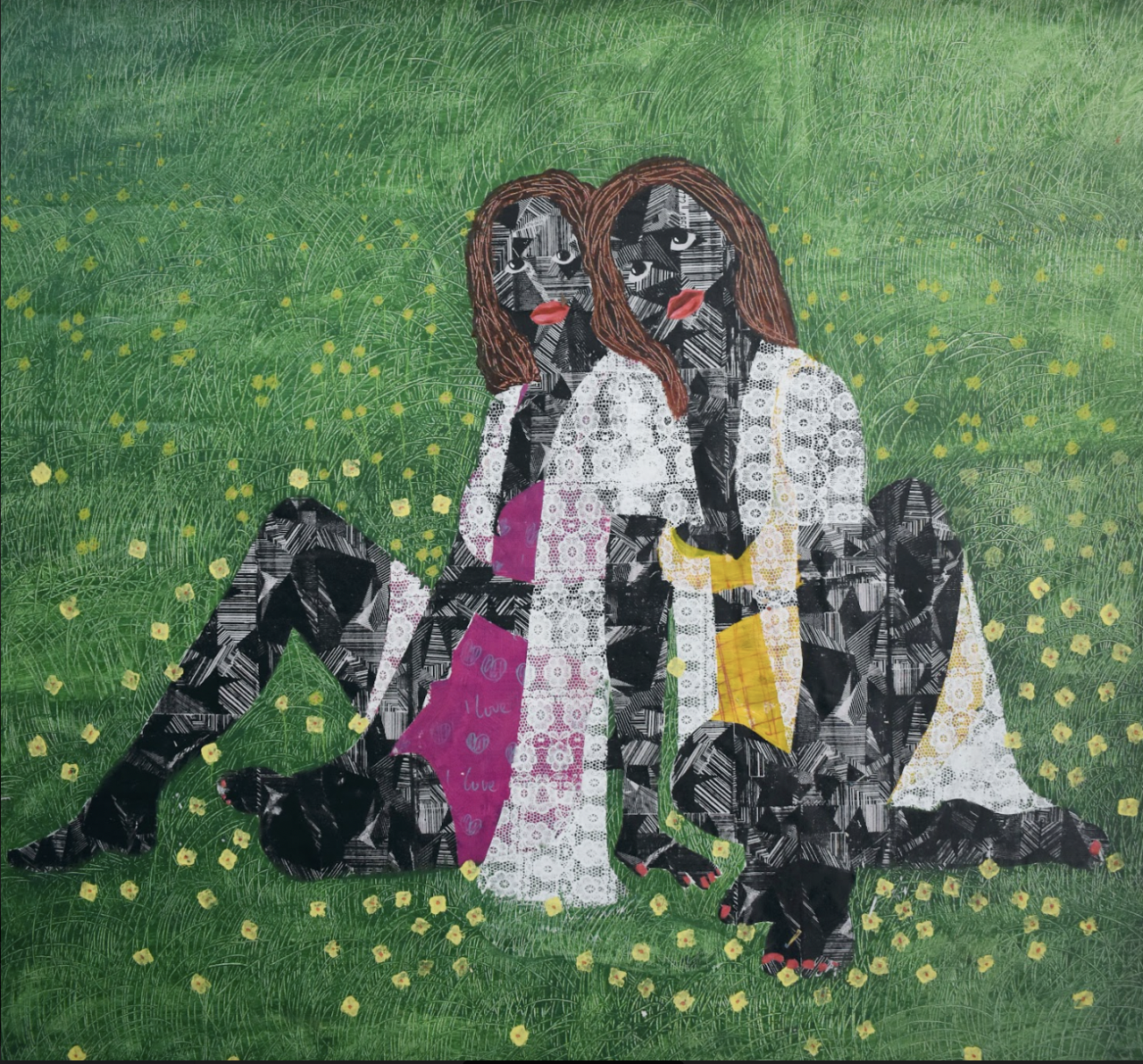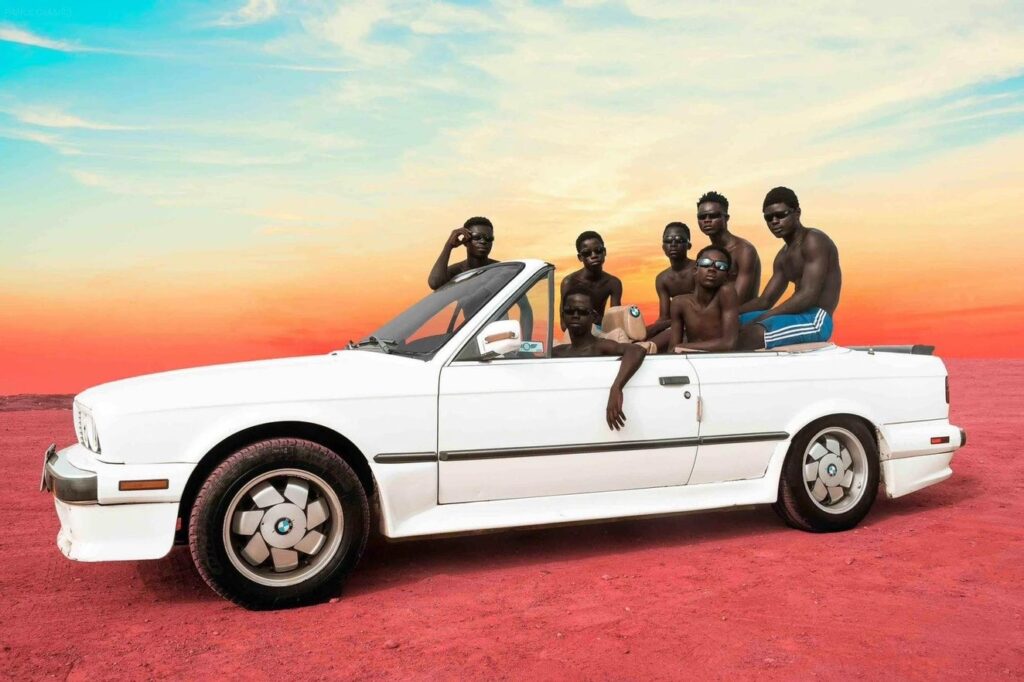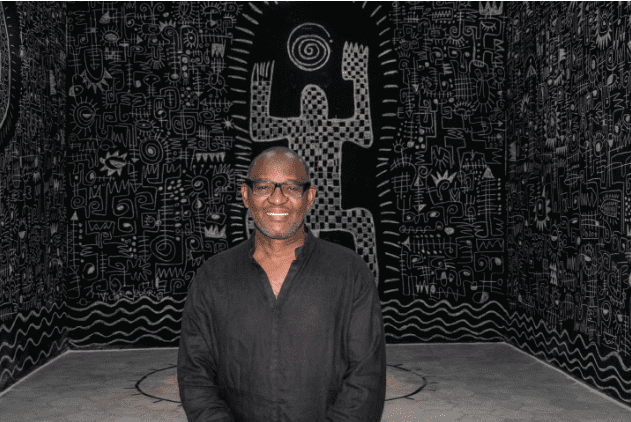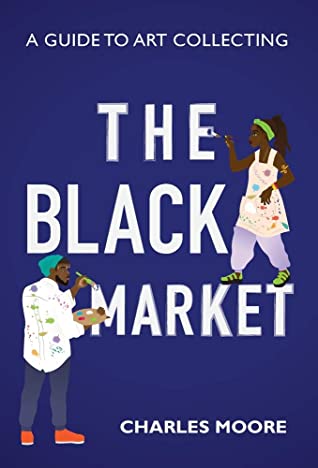Above: Odinakachi Okoroafor | The Land is Green | acrylic on canvas | 2022
This Week in African Art and Culture explores various diverse stories across the visual art and literary space. From group exhibitions in Lagos, Nigeria to the ever-intriguing depictions of childhood by a South African artist in a solo show in London, these exhibitions reflect the diverse visual expression much talked about in the African art scene.
On the literary scene, a story by a Nobel Prize winner gets translated into Nigeria’s western language, Yoruba, and a Kenyan writer wins the prize for one of the most prestigious literary prizes on the continent.
Art Bridge Project and SABO Art Advisory Present Group Show: My Brother’s Keeper
At MILIKI Lagos, situated on Nigeria’s Victoria Island, Art Bridge Project, in collaboration with SABO Art, has presented a group exhibition titled My Brother’s Keeper. The exhibition features works by four Nigerian artists—adeoluwa oluwajoba, Chijoke Anyacho, James Adebayo and Odinakachi Okoroafor which focus on the family, religion, private and public spaces; the exhibition explores themes of community, collective joy and mutual empowerment in an ever-evolving world with diverse cultural and social identities.
Using suggestive titles, such as The Land is Green and Together, Odinakachi Okoroafor’s works celebrate cultural diversity in Nigeria and connote that the rise of tribalism and religious sentiment clogs the wheel of progress in the nation.
In adeoluwa oluwajoba’s distorted collages of human figures, the artist explores the complexities of navigating private and public spaces. Drawing on personal experiences of sharing apartments with friends, he mirrors the conditions of contemporary migration, mobility, transformation and transition.
James Adebayo has presented a recent series, The One with Flowers. In it, the artist engages his friends who also are artists as his muse to trigger conversations around friendship and building safe spaces for people to communicate their needs, desires and emotions. Influenced by the Bible verse, “Blessed be the Lord, my rock, who trains my hands for war and my fingers for battle.”
Chijioke Anyacho creates a mythical universe that offers a broader perspective on one’s often-futile efforts to control the chaos of the world. Each artist, in their own way, compels a connection with the viewer based on the artist’s experiences by offering varied expressions on navigating spaces and interpersonal relationships.
My Brother’s Keeper can be visited through July 29, 2022.
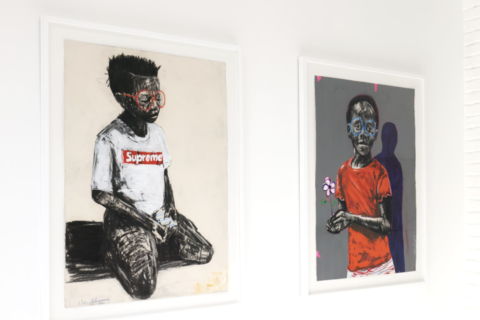
Above: Nelson Makamo | installation view at Rise Art Gallery | 2022
Nelson Makamo’s Latest Solo Exhibition in London Explores Theme of Togetherness
On July 22, at Rise Art in London, a new body of work from South African figurative artist Nelson Makamo opened. The artist is known for his fascinating portraits depicting children and childhood in lively, gestural drawings in charcoal.
Makamo’s latest pieces diverge slightly from his previous works by exploring themes of togetherness. While he usually would focus on fragmented portrayals of solitary figures, the artist has homed in on community in this new body of work, painting two children grasping hands, or in the case of Mission Possible, one of the works on view, a group of friends are huddled in a tight cluster.
Meeting people, speaking with them, and learning about them are as essential to his practice as drawing and painting are. Togetherness, not loneliness, is at the core of the artist’s work. It might seem surprising, then, that the drawings he first became known for tend to feature solitary, disembodied subjects. In these solo portraits, Makamo’s talent for capturing the emotional intensity and overwhelming sense of hope in his sitters is a matter of expression and movement.
This exhibition brings a new level of detail to Makamo’s world: the spaces that the subjects occupy, the clothes that they wear, the company that they keep, and the way that they look (or don’t look) at their companions all bring depth and complexity to his characters.
With these new contexts, the emotional intensity of Makamo’s work remains, as many of the subjects carry all the emotional intensity of his early drawings. Momentarily, these faces hover above their surroundings, their innermost essences exposed. They are both members of social groups and wider contexts and are overwhelmingly individual. They are alone, together.
Makamo’s exhibition will run from July 22–Aug. 25, 2022 at Rise Art Gallery in London.
Ghana Exchange Program “Travel Somewhere Nice” Launches Second Edition
Initiated by the artist and curator Nantume Violet in 2021, “Travel Somewhere Nice” is an annual program that provides invaluable opportunities for learning, networking, and trans-regional exchange within Africa and exclusively to African artists.
The program prioritizes practitioners based in East Africa, where the contemporary art scene is currently less dynamic, exposing participants to the best and most vibrant art schools, art scenes and artist-led projects on our continent. It partners only with institutions committed to researching and “teaching from” their local contexts and that foster the kinds of collective creative practices that contribute to lasting social transformations.
Through a curated program of studio visits, studio crits, portfolio reviews, workshops, and tours, Travel Somewhere Nice gives its participants first-hand experience of the rich and sophisticated range of pedagogical and creative practices, old and new.
The first edition of Travel Somewhere Nice was described as successful, so the second edition is set to take place. This year’s trip to Ghana will see artists, curators and cultural producers from Uganda, Kenya and Tanzania visit three cities in Ghana: Accra, Kumasi and Tamale from Aug. 8-16, 2022.
The exchange program is hosted in part by the internationally renowned fine art department at Kwame Nkrumah University of Science and Technology in Kumasi, Ghana, and is jointly organized by UNDER GROUND Kampala and blaxTARLINES KUMASI; in collaboration with Vodo Art Lab and Society, SCCA Tamale and Opoku Ware II Museum KNUST.
The program lays the ground for collaborations among artists and art institutions in Africa and beyond. The research program addresses the crucial need for art educators to rethink art education and pedagogies.
The participating organizations and individuals are
1. Zitoni Tristan Kayonga – art director, Vodo Art Lab + Society, Kampala
2. Mugerwa Nicholas – managing director, UNDER GROUND Contemporary Art, Kampala
3. Adjo Daiki Apodey Kisser – lecturer, KNUST, member, blaxTARLINES KUMASI
4. Kwaku Kisseidu – lecturer, KNUST, co-founder, blaxTARLINES KUMASI
5. kąrî’kạchä seidou – lecturer, KNUST, co-founder, blaxTARLINES KUMASI
6. Dorothy Akpene Amenuke – lecturer, KNUST, founder, Ofkob Artist Residency, Kumasi
7. Va-Bene Elikem Fiatsi – artist and director, perfocraZe International Artist Residency (pAIR) Kumasi
8. Selom Kudjie – artist and curator, SCCA Tamale Artistic Director
9. Ibrahim Mahama – artist and director at SCCA, Redclay Studios and Nkrumah Voli-ni, all institutions in Tamale.
Vodo Art Lab + Society is an arts collective and society of artists initiated in 2018. The collective mainly engages public art and offers platforms to artists of all genres: visual art, dance, poetry, music and theater.
UNDER GROUND Contemporary Art is an art project and space founded in 2015 in Uganda. The space focuses on research-based and collective artistic and curatorial practices realized through trans-disciplinary collaborative exhibitions and manifestations.
blaxTARLINES, KUMASI is a project space and infrastructure that came out of the Emancipatory Art Teaching to sustain the ethos of radical experimentation and transform them into long-term practice through collective movement. The team of collaborators, artistic directors and curators is a loose network of practicing artists and art professionals.
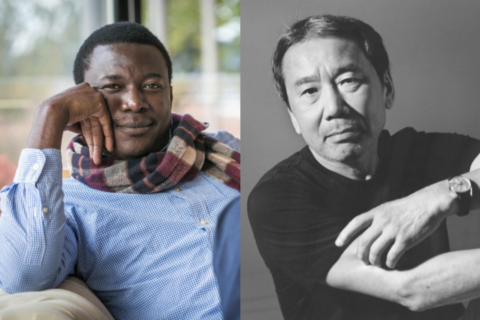
Above: Kọ́lá Túbọ̀sún and Haruki Murakami
Kọ́lá Túbọ̀sún Translates Haruki Murakami’s Confessions of a Shinagawa Monkey into Yoruba
One of the main topics talked about in literature is language. That is, in the sense of how words are framed together to convey mood or relay tones, language in a literal sense, and the role it plays in cultural preservation and retaining our pre-colonial essence as Africans. In this sense, we are excited to share news of a new translation of renowned Japanese author Haruki Murakami’s story into the Yoruba language by Nigerian linguist and writer Kọ́lá Túbọ̀sún.
Murakami’s story, titled Confessions of a Shinagawa Monkey is Ìjẹ́wọ́ Ìnàkí Shìnágawà Kan (in Yoruba) and is published with cover art by Yemisi Aribisala.
This translation is yet another milestone for the brilliantly ambitious Túbọ̀sún, currently based in Lagos, who earned the 2019 Miles Morland Scholarship in nonfiction. His many translation projects include the Yoruba translations of the Caine Prize-winning story Grace Jones by Irenosen Okojie, Chimamanda Adichie’s The Shivering, and the poetry collection, Childhood, by the American philosopher and professor Emily R. Grosholz.
Túbọ̀sún has been translating literary texts from English to Yoruba for almost 20 years, during which he has translated works by the likes of Wole Soyinka and Ngũgĩ wa Thiong’o. In an interview with Brittle Paper literary magazine, he said that his interest in African language translation was sparked by the realization that the literary culture around translations was centered on European languages. “I found that almost all grants you can find only reward translations from African languages—in essence, rewarding the reader in English or the other hegemonic languages more than it rewards the source languages,” Túbọ̀sún said.
Túbọ̀sún’s translation of Confessions of a Shinagawa Monkey is the first time Murakami’s work, which has been translated into a dozen languages, has been translated into an African language.
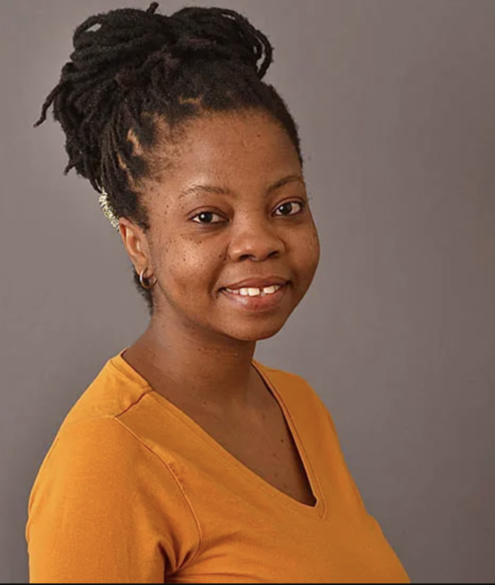
Above: Idza Luhumyo
Kenyan Writer Idza Luhumyo Wins Ako Caine Prize for African Writing 2022
Idza Luhumyo was announced the winner of the AKO Caine Prize for African Writing 2022 at a ceremony in London on July 18.
The AKO Caine Prize for African Writing has been awarded annually since 2000 to an African writer who has published a short story in English. It has recognized some of the most famous writers working today, like Leila Aboulela, Helon Habila, Yvonne Adhiambo Owour, and many more. In recent times, winners of the prize have been Meron Hadero (2021), Irenosen Okojie (2020), Lesley Nneka Arimah (2019), Makena Onjerika (2018), Bushra al-Fadil (2017), Lidudumalingani Mqombothi (2016), Namwali Serpell (2015) and Okwiri Oduor (2014).
This year’s edition was judged by author, journalist and academic Okey Ndibe, who chaired the panel alongside Elisa Diallo, Letlhogonolo Mokgoroane, Angela Wachuka and Àsìkò Okelarin. The five shortlisted writers were announced from among 349 entries representing 27 African countries: Joshua Chizoma (Nigeria), Nana-Ama Danquah (Ghana), Hannah Giorgis (Ethiopia), Idza Luhumyo (Kenya) and Billie McTernan (Ghana).
Okey Ndibe, chair of the judging panel, said of Luhumyo’s work, “What we liked about the story was the mystical office of the protagonist, who is both ostracized and yet holds the fate of her community in her hands. She is stripped of agency by her immediate family, as well as the Europeans who give the impression of placing her on a pedestal, yet within that seeming absence of agency, and oppressive world is her stubborn reclamation of herself. The dramatic tension in the story is so powerful and palpable that it’s like something you could cut with a knife.”
Five Years Next Sunday, which won the Short Story Day Africa Prize 2021, is about a young woman with the unique power to call the rain in her hair. Feared by her family and community, a chance encounter with a foreigner changes her fortunes, but there are duplicitous designs upon her most prized and vulnerable possession.
Idza Luhumyo’s works have been published by Popula, Jalada Africa, The Writivism Anthology, Baphash Literary & Arts Quarterly, MaThoko’s Books, Gordon Square Review, Amsterdam’s ZAM Magazine, Short Story Day Africa, the New Internationalist, The Dark, and African Arguments. Her work has been shortlisted for the Short Story Day Africa Prize, the Miles Morland Writing Scholarship, and the Gerald Kraak Award. She is the inaugural winner of the Margaret Busby New Daughters of Africa Award (2020) and winner of the Short Story Day Africa Prize (2021).
Luhumyo receives the £10,000 (U.S. $12,004) cash prize while the other shortlisted writers receive £500 (U.S. $600).
Compiled by Roli O’tsemaye







